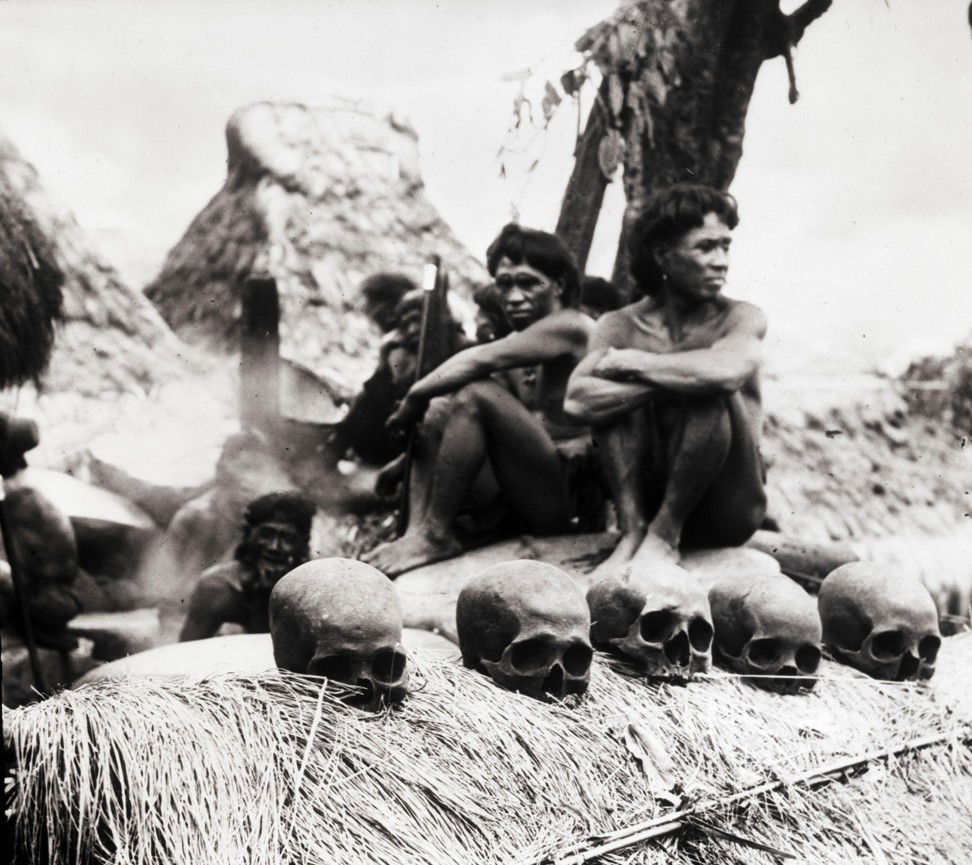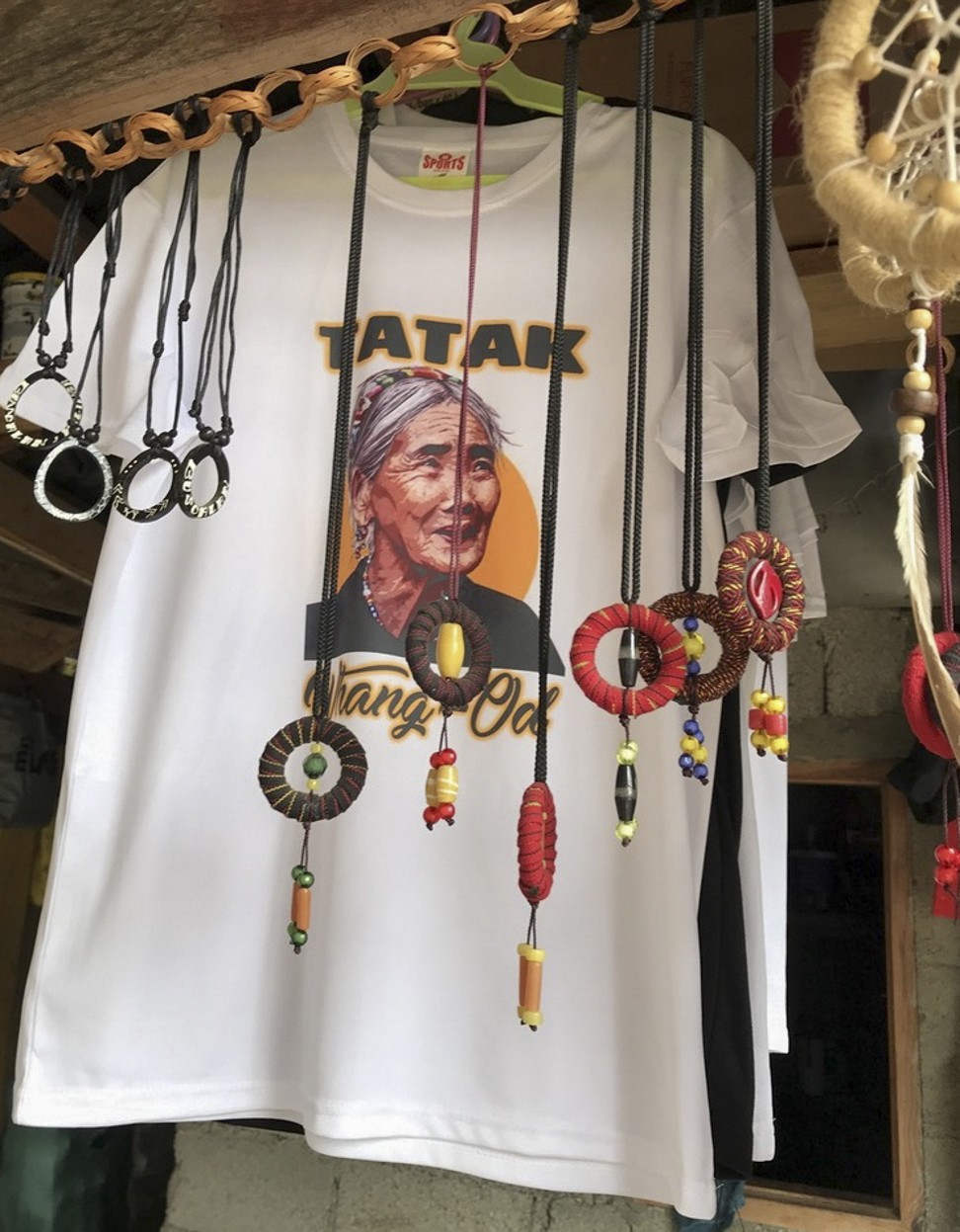
A perilous trip to the northern Philippines to get a tattoo from Whang Od, the oldest practitioner of her art – no pain, no gain
- Thousands have made the treacherous journey to Buscalan to be inked by the 100-year-old tattooist
- Tourism has brought money and outsiders to the remote province, once home to headhunters

In heavy rain, we are driving along a narrow, twisting road in the Philippines’ Mountain Province, never knowing what lies around each hairpin bend. Downpours loosen the thin soil of these craggy mountains, causing landslides. We have been slowed or stopped several times by rocks strewn in our way, long cracks in the road surface or large pools of muddy water.
I am trying to adjust to the constantly unpredictable conditions but I cannot foresee the near-fatal mishap that lies ahead …
The Cordillera Central, a high mountain range about 320km long and 65km wide, is home to ethno-linguistic groups such as the Kalinga, Ifugao, Bontoc, Ilongot, Sagada Igorot and Apayao, each with their own dialect and customs. And all former headhunters.
Although long outlawed, the practice of taking heads continued until the late 1970s and the belief persists that these trophies attest to the valour of the warrior and will bring good fortune to his village. We are on our way to meet a woman who has tattooed many headhunters and has become a legend as the oldest living practitioner of her art.

We started this journey in tropical Manila, two days earlier. This morning we breakfasted at a mist-shrouded cafe, where my wife and daughter stood out in their city clothes among the well-wrapped women with sturdy builds and weather-beaten faces who were fuelling up on lechon (roast suckling pig), beef, fried egg and ampalaya (bitter melon) before another back-breaking day of planting rice.
Together with our burly driver, Pudong, who sports a small goatee and a stud in his ear, and our slightly built, soft-spoken guide, Abegail Fernandico, we have looked up at towering peaks and down into green valleys with sculpted rice terraces. We have passed trucks sidelined by accidents, and jeepneys with rooftops packed with passengers and pigs sheltering from the rain under tarpaulin.
Our vehicle comes to a halt at the Turning Point, so called because the road ends abruptly. Our destination, Buscalan, is on the other side of a ravine, where we can see a smattering of white amid the green. If all goes well, it should take an hour to trek to it.
A few days earlier, our daughter had announced her determination to get a tattoo and insisted on being inked by Apo Whang-od Oggay, a traditional artist who, having helped raise her village out of poverty, embodies Filipino female empowerment. Apo means “elder”, conveying respect.
There were two complications. One was that Whang-od was said to be around 100 years old, so time was of the essence. The second was that she dwelled in Buscalan, a remote village in the far north. My wife and I didn’t approve of the tattoo, but we agreed to accompany our daughter on what could have been a hazardous expedition.
For starters, the clannish indigenous mountain people are wary of outsiders. They violently resisted attempts at control by Spanish and American colonisers, and by successive central governments since Philippine independence. During World War II, they fought Filipino soldiers marauding for food as well as the Japanese. These hardy, self-reliant people jealously guard their rich natural resources.

We start down the same trail taken a decade ago by American tattoo anthropologist Lars Krutak, who was making a documentary featuring Whang-od and the Kalinga way of life for Discovery Channel’s Tattoo Hunter series. In the film, Krutak admits he is nervous as he doesn’t know what to expect from a community where blood feuds run deep. He ended up filming Whang-od giving a warrior tattoo to a man who had earned it by killing three others in a land dispute.
Five minutes into our trek, the man in front of me stops and, standing with his back to the mountain, gestures for me to pass. After a moment’s hesitation, I place my right foot on the outside edge of the path. The soft earth disappears and I slide on my back into the abyss. I grab at long grass and plants, anything that might slow me down, and after a few long seconds, slither to a stop seven metres from the trail, saved by a clump of scrub.
Nothing is broken but I’m aware that, had I slipped at another point on the track, I might have tumbled to a messy end. Fired by euphoria at being alive, and shame at my carelessness, I brush aside offers of help from a stocky Kalinga man, Johnny Bagtang, though I do ask for two branches to use as walking aids.
It takes me more than an hour to hobble to the stream at the base of the ravine and ascend the seemingly endless rough-hewn steps on the far side.
Near the village’s entrance is a step etched with the words, “Welcome to Korian [sic]”, a reference to Korean evangelists who began converting the Butbut – a geographical unit of the Kalinga people – in the 1990s. Today, many Butbut are Christian but they keep their animist beliefs, too. The spirits, who dwell in the trees, rocks and rivers, must be appeased.
Buscalan was effectively off-limits to outsiders in 2009, when Krutak asked for permission to stay. It was Whang-od who examined a pig’s liver for an omen before approving the documentary maker’s request.
Ten years on, news of my accident has raced ahead and many of Buscalan’s population of about 700 line the path to observe my limping arrival.
Our first call is to the clinic of midwife Josephine “Ipin” Laguinday. This briskly efficient woman, wearing a black-and-white hooped shirt and a beaded necklace, can stitch me up but says she has no anaesthetic. As she threads a needle through my skin, ignoring my unmanly yelps, Ipin says she has been delivering about 25 babies a year since 1993.

While I am lying in an undignified position, a white-haired woman pops her head around the door. It is Whang-od, whose fame through the Krutak documentary has sparked a steady stream of visitors from around the world. Most seek tattoos as a spiritual symbol, an assertion of identity or as a souvenir of a remarkable experience.
Buscalan has no mobile phone coverage and limited electricity, and in the evening, we settle into simple quarters – bare rooms with mattresses and a few chairs.
The following morning, after Pudong cooks a breakfast of chorizo, corned beef and fried egg with rice, Fernandico takes us for a walk through the village. Built on a slope, the homes are not only cheek-by-jowl but higgledy-piggledy on top of one another. Some are on stilts and many are made of wood and galvanised iron. A stone and earthen path is separated from a deep gorge by a flimsy looking rail. We clamber over stiles that pen in fat black hogs and pass children playing hide and seek and men sitting on porches, gazing into the distance.
Tourism has brought a modest prosperity to Buscalan. Souvenir stalls sell T-shirts emblazoned with Whang-od’s serene face; some houses are being built from concrete instead of wood. But elders complain that the community, especially its young, is turning away from farming and carpentry to run homesteads and work as guides.

At the top of the village, we catch our breath at the sight of swathes of flat lime-yellow paddy fields between rocky peaks. Bagtang appears and says they have one rice harvest a year and he cannot remember a crop failure. Also growing are cherry tomatoes, aubergine, squash, Chinese cabbage and onions.
His goddaughter, Belen Am-Batang, runs a homestead and invites us in for coffee. One of her children is named Duterte, after the president of the Philippines. Am-Batang was born in Buscalan 32 years ago and cannot imagine living anywhere else, though her husband, a soldier in the Philippine army, is away a lot.
Tattooing was widespread in the Philippine islands before the Spanish arrived in the 16th century but was disparaged by missionaries and secular authorities. The ancient “visual language”, as Krutak describes it, was fading even among the Kalinga before his film helped fuel a revival. Even so, some warn that visitors to Buscalan – and most are foreigners, not Filipinos – may not fully understand what they are getting.
“Whang-od’s tattoos are modern interpretations of a tradition that is already in the past and her marks do not imply their original and authentic ethnic and indigenous purpose,” Professor Io M Jularbal, head of Indigenous Studies at the University of the Philippines, in Baguio, will later tell me. “The value of the tattoo will be personal and not in any way evocative of mountain tribal sensibilities and cultural representations.”

The batok (tattoo) ritual takes place in a thatched room with panoramic views, a distraction from the pain of being pierced hundreds of times by needle-sharp thorns. Whang-od’s eyesight has deteriorated with age so the tattooing is done by her grand niece, Grace Palicas, although the illustrious elder will sign off on the work. Her hair tied back in a bun, Palicas uses a bamboo hammer, lemon thorn and charcoal to implant a small image of the sun on our daughter’s back. It takes an hour.
Palicas also appeared in the Krutak film. She has spoken of succeeding Whang-od as a mambabatok (tattoo artist) but her life has also been changed by the inflow of visitors. She married one, a Frenchman named Theophile.
Whang-od, wearing tribal headgear and a pink jacket, nails in her signature three dots. She does this with some force and our daughter says this was the most painful, though treasured, part of the experience.
Although she likes a joke, her impassive face sometimes creasing with laughter, Whang-od says little to visitors, but she did tell Krutak her boyfriend died in the war and she never married. She is revered as a leader and, in the documentary, she alternately scolds and grudgingly praises Krutak as he struggles with rice pounding, mud wrestling and animal hunting while trying to learn the Kalinga way of life.
It is time to depart, and my turn to endure some pain. The ordeal of the return hike is completed only because, although my wounds are yet to heal, I have no choice – I refuse to be carried down like a cow in a sling – and Bagtang’s steel grip steers me down and hauls me up the big steps.
Back in the van, my daughter, still sore, declares herself “very happy”. None of us, of course, lost our heads. If there are spirits on that Buscalan mountain, they have been reasonably kind.